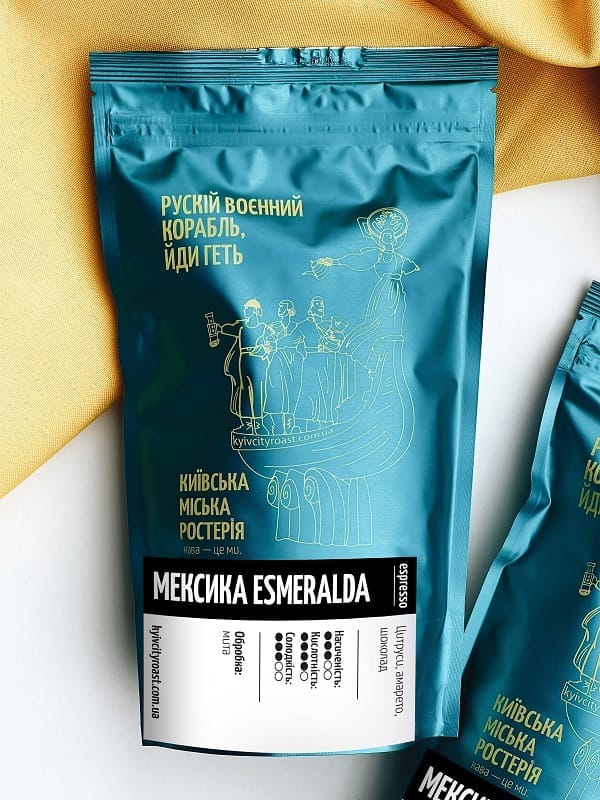The world of coffee is an endless space filled with a wealth of flavors and aromas that vary depending on the plant variety, bean processing method, and brewing method. There are thousands of variants of coffee, but for true connoisseurs it is important to distinguish between the main types – Arabica and Robusta, each of which has its own unique properties. Understanding these differences allows you to make an informed choice in favor of a single-origin arabica, arabica blend, or a blend of arabica and robusta.
What is Arabica?
Arabica is one of the most popular and valuable types of coffee, accounting for the majority of global production. This variety is known for its mild, rich flavor and delicate aroma, which makes it a favorite among coffee lovers.
The history of Arabica begins in Ethiopia, where it was discovered more than a thousand years ago. Subsequently, it spread to Arab countries and Europe, and gradually conquered the whole world, becoming the main variety for the production of high-quality coffee.
The specifics of growing Arabica coffee include specific climatic conditions. It requires a stable cool temperature, humidity and high altitude for its development. The height of cultivation should be from 600 to 2000 meters above sea level. The process of cultivating Arabica usually includes natural methods that ensure the preservation of all the flavoring properties of the grain.
The main characteristics of arabica
The taste of Arabica is multifaceted and sophisticated. Notes of fruit, flowers and chocolate intertwine to form a harmonious palette. The aroma beckons with hints of nuts, honey and spices.
The natural level of acidity gives the drink freshness, but does not make it too harsh. The perfect balance between sweet and sour notes.
Arabica beans have a moderate caffeine content, which makes them milder in flavor and more resistant to oxidation. High-quality bean processing helps to preserve freshness for even longer and increases the value of this variety.
Advantages and disadvantages of arabica
The advantages of Arabica make it the choice of prestigious coffee shops and gourmets. Exquisite flavor profile, persistent aroma, mildness.
However, there are some drawbacks.
The high price of arabica makes it not affordable for everyone.
Arabica, although it has a greater potential for flavor preservation, requires not only proper conditions but also timely consumption.
The mild taste of Arabica is not the best choice for cocktails with milk.
What is a blend?
A blend is a mixture of different coffee varieties that is created to achieve a unique flavor and aroma. Blending allows you to combine the best characteristics of different beans, creating a balanced and harmonious cup. The history of blends dates back to the days when coffee beans were sourced from different parts of the world, and producers were looking for ways to combine different types of coffee in different proportions to achieve the perfect taste.
Main characteristics of the blend
Blends are characterized by a rich flavor profile, as they combine several types of coffee with different characteristics. The result of unique combinations is a balance of flavor and aroma.
A single-origin coffee has a stable amount of caffeine. In a blend, it can be lower or higher depending on the proportions of the varieties, such as Arabica and Robusta. Thanks to different blending options, you can control the level of caffeine. The more Robusta, the stronger the drink.
Blends are more resistant to external factors, as the combination of different grains allows you to maintain a stable taste even when storage conditions fluctuate.
Advantages and disadvantages of blending
The cost of blends is usually lower than the cost of single varieties. When combined with other types of coffee, you can reduce the overall cost of the product without significant flavor loss.
Blending allows you to experiment with different types of coffee, processing types, and proportions, so that everyone can find the drink that meets their idea of the perfect taste.
However, if the blend consists of low-quality beans, the overall level of flavor and aroma will be appropriate.
The disadvantages include masking grains with defects, which can also negatively affect the overall quality.
Key differences between Arabica and Blend
As a single variety, Arabica is famous for its refined, mild flavor with fruity, floral and chocolate notes. Its aroma is rich and delicate. In a blend, its properties are adjusted by the profile of another type of coffee, most often Robusta.
Arabica is usually more expensive due to its high quality and complex cultivation process. Blends can be more affordable because they use both premium varieties and less expensive beans.
Arabica has a lower caffeine content than Robusta, which is often included in blends. The caffeine content of a blend depends on the varieties and proportions used.
Arabica processing requires delicacy to preserve its flavor, and roasting can be either light or medium. A blend sometimes combines different processing and roasting methods to achieve an optimal balance.
Roasting methods and their impact on flavor
The level of roasting has a significant impact on the flavor: light roasting gives a pronounced acidity and fruity taste, while dark roasting adds a deep, rich flavor with notes of chocolate and caramel.
Arabica roasts usually range from light to medium roast.
In the blend, beans of different varieties are roasted separately and then combined to create the perfect balance of flavor and aroma.

How to store coffee properly?
Recommendations for storing arabica and blends are similar:
- Store grains in airtight containers or vacuum packs.
- Avoid exposure to direct sunlight.
- Store in a cool, dry place
- Avoid temperature extremes and high humidity.
Improper storage leads to loss of flavor, bitterness, and lack of a pleasant aftertaste. After opening the package, it is advisable to consume the coffee within two weeks.
Brewing features
The ideal flavor extraction depends on the balance between water temperature, water quantity and the time it is in contact with the coffee. Too short an extraction time results in an unsaturated flavor, and too long an extraction time results in bitterness. It is important to find the optimal time to get the perfect flavor.
Arabica is at its best when brewed using methods that avoid overheating. The filter method or a temperature-controlled coffee maker are best suited for this purpose, as they allow the extraction to take place evenly.
Blends benefit from methods that emphasize their complexity. A French press or espresso machine can help coffee reveal its depth and richness, provided the exact dose and time of extraction is followed.
How to choose between Arabica and blend?
Choose what you like!
If you like delicate, pure flavors, Arabica is your option. Blends have a more complex flavor profile, often deep and rich.
Beginners are advised to start with single varieties. After getting to know Arabica, you can try blends containing Robusta in different proportions. Thus, over time, it will become clear what exactly you like in coffee. Experienced coffee drinkers can experiment with blends, as they offer a greater complexity of flavors and the opportunity to find their own perfect mix.
If you have a limited budget, you should give preference to blends, as Arabica is a rather expensive product.
Frequently asked questions
- What is the difference between arabica and blend?
Arabica is a single variety characterized by a mild, fruity or floral flavor with high acidity.
A blend is a mixture of different types of coffee with a more complex and rich flavor profile.
- Which tastes better: arabica or blend?
Taste is a very individual concept. Choose the option that gives you pleasure.
- Does the price influence the choice between Arabica and blend?
Arabica is usually more expensive due to the complexity of its cultivation and processing. A blend can be cheaper, in particular because of the combination of arabica and robusta, which are more readily available.
- Can I mix Arabica and blend to achieve the desired flavor?
Yes, blending Arabica and blend is a great way to get the desired flavor profile.
- How do I know which type of coffee is best for me?
Try different variants. If you like a light, flavorful taste, try Arabica. If you want a richer, deeper coffee, a blend might be a better choice. Pay attention to the flavors, acidity, and bitterness to find out what you like.
Conclusion: which is better to choose?
Should I choose Arabica or blend? The decision depends solely on your taste preferences and the situation. Arabica is suitable for daily consumption due to its mild flavor, while blends are ideal for special occasions due to their more complex flavor profile and higher caffeine content. It is important to experiment and choose according to your preferences and budget.





